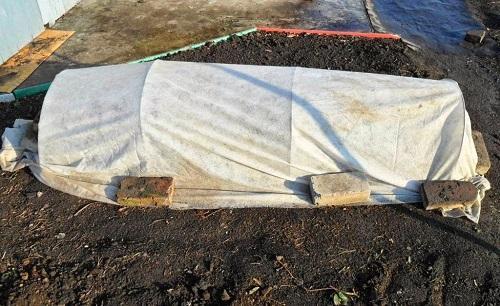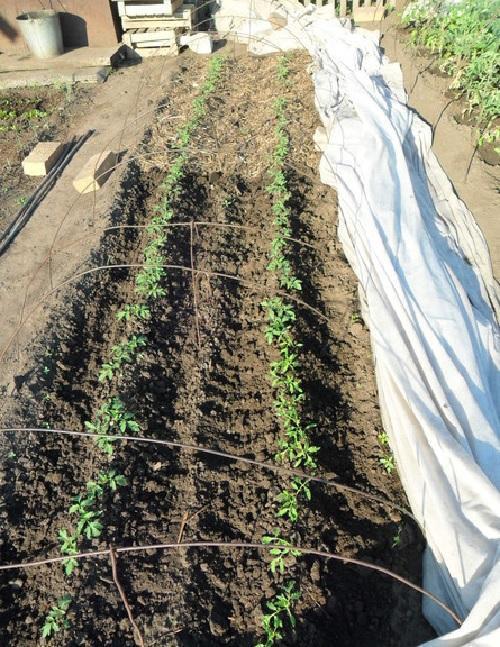Growing seedlings in the open field under a film
The method of obtaining seedlings of vegetable crops under a film cover is quite often used by gardeners who do not have the opportunity to do this in a greenhouse or in an apartment. Most often it is used for tomatoes.
Advantages of the method of growing seedlings under temporary shelter

The main advantage of this method of obtaining seedlings is that "film" plants have a more stable immunity to adverse climatic conditions compared to greenhouse seedlings... They more easily tolerate transplanting and lower air temperatures.
In addition, the film cover allows sowing seeds into the soil for seedlings almost a month earlier. So, under temporary shelters, seeds can be sown already from the second decade of March, and the seedlings will be ready for transplantation to a permanent place as early as 20 May. Accordingly, this will bring the harvest time closer.
Growing seedlings in open ground under a film can be conditionally divided into three stages:
- selection of crop varieties and site preparation;
- placement of landings;
- construction of a shelter.
Selection of seeds and preparation of a site for a nursery
For growing seedlings under a film cover, it is recommended to use zoned early and mid-season varieties of garden crops. As for tomatoes, the Far North, Sanka, Siberian precocious, Ogorodnik varieties are suitable here.
The site for a film nursery should be prepared in advance: dig it up in the fall, add organic matter and mineral fertilizers. In spring, dig a shallow trench (up to 20 cm) across the width of the film.
Experienced gardeners recommend placing a layer of straw insulation on the bottom of the trench or sawdust - they will protect the seedlings from the cold and not yet heated soil. On top of the sawdust, apply a layer of soil that was dug out.
Placement of landings and construction of a shelter
It is better to sow seeds for seedlings in a band manner, alternating narrow aisles with wide ones. It should be borne in mind that one sheet of film should be enough to cover 2 rows with narrow aisles.
Shelter construction

In order to make a film shelter, you will need:
- Film - it is better to use polyethylene with a thickness of at least 100 microns and a width of up to 160 cm.
- Supports - special wire arches from 160 to 180 cm long.
Arcs should be placed every meter across the planted row and the film should be pulled from above. Fix the edges of the film (sprinkle) with earth on all sides. If a strong wind capable of breaking the shelter is not a frequent visitor in the region, one side of the film can not be sprinkled, but simply pressed with something heavy. This will facilitate the ventilation process.
In case of expected frosts, the nursery should be covered with a second layer of film on top.
The shelter can be removed when stable warm weather sets in, but before that, the nursery must be well ventilated for 5 days. And if the summer is predicted to be cold, vegetables are grown under a film, periodically airing a mini-greenhouse.